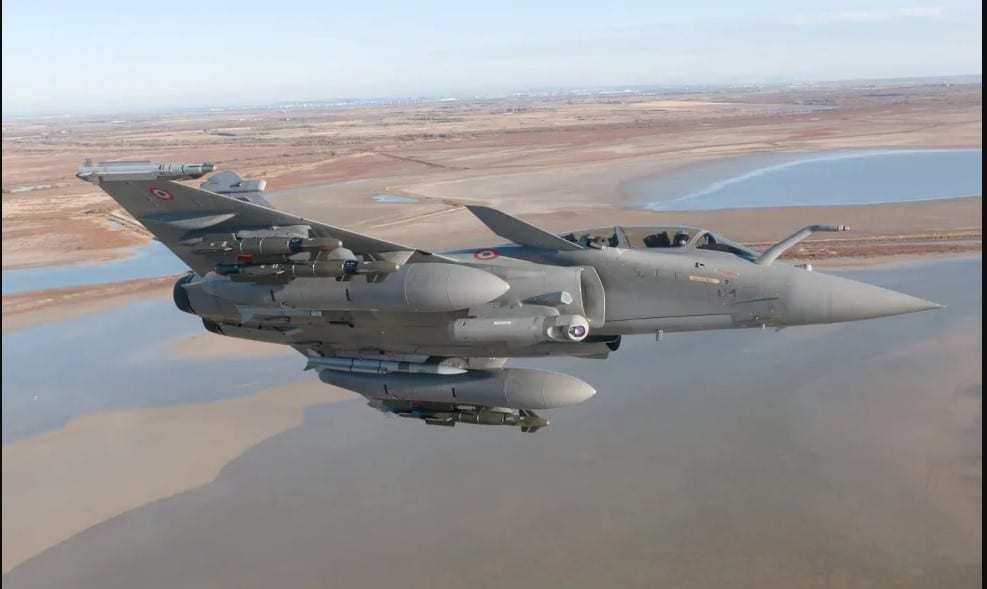Aviation
Dassault delivers first Rafale f4 to French air force

With the delivery of the first aircraft modified to the F4.1 standard to the French Air Force, the Dassault Rafale, the primary fighter jet of France, achieved a new milestone. The Military Aviation Expertise Center at Air Base 118 in Mont-de-Marsan received the first Rafale to the F4.1 standard on Thursday, March 2.
10 Most Expensive Fighter Jets In The World(Opens in a new browser tab)
The Rafale F4.1 standard is the latest version of the Rafale fighter jet developed by the French company Dassault Aviation. This upgrade is a step ahead of the previous F3R standard and includes several improvements in terms of capability, versatility, and connectivity.
One of the key upgrades in the Rafale F4.1 is the integration of the new Meteor air-to-air missile, which has a longer range and improved performance compared to its predecessors. The Rafale F4.1 also features improved connectivity with other aircraft, ground stations, and satellites, which allows for better coordination and situational awareness in the battlefield.
Indian Navy to buy Rafale M fighter plane after IAF?(Opens in a new browser tab)
Another major improvement is the integration of the Talios targeting pod, which provides high-resolution imagery and laser designation for precision strikes. The Rafale F4.1 also includes enhancements to the aircraft’s electronic warfare system, which increases its ability to detect and respond to threats. Other upgrades in the Rafale F4.1 include improvements to the cockpit displays and controls, upgrades to the engines and avionics, and improvements to the aircraft’s airframe and maintenance systems.
The first steps in the development of the F4 standard were taken in 2019, when Dassault and then-Armed Forces Minister Florence Parly agreed to a €2 billion ($2.12 billion) deal. Pilots will be supported by a significant technical advance in the future’s high-intensity wars. Based on the arrival of a second Rafale F4.1 by next week, the device will go undergo a number of trial stages in the upcoming months.

Airlines
Air India to Launch aircraft maintenance training institute in Bengaluru

Air India, one of India’s leading global airlines, is set to establish a Basic Maintenance Training Organization (BMTO) in Bengaluru.
This institute will offer a comprehensive Aircraft Maintenance Engineering (AME) program certified by the Directorate General of Civil Aviation (DGCA). The program will follow an integrated 2+2 year structure, combining classroom learning with practical, hands-on training.
This initiative is part of Air India’s broader goal of creating a robust aviation ecosystem in India. With plans to expand its fleet and strengthen its operations, the airline aims to build a skilled workforce of maintenance engineers, making the organization self-reliant while supporting its ambitious transformation journey.
This country tops visa rejections in the popular Schengen countries
To bring this vision to life, air india has partnered with Bengaluru Airport City Limited (BACL), a subsidiary of Bangalore International Airport Limited (BIAL). Together, they will develop a state-of-the-art facility spanning 86,000 square feet at Bengaluru Airport City.
This purpose-built campus will feature modern classrooms, well-equipped laboratories, and qualified trainers to deliver world-class education and training. The institute is expected to become operational by mid-2026.
The BMTO will be located close to Air India’s new 12-bay Maintenance, Repair, and Overhaul (MRO) facility, also set to open in Bengaluru by early 2026. The AME program will begin with two years of academic coursework, followed by two years of practical training at the MRO, ensuring students receive hands-on experience adhering to industry standards.
Sanctions & Engine Issues Ground Half of Russia’s A320neo fleet
In the meantime, Air India has introduced a Cadet AME program in collaboration with reputable institutions in Bengaluru and Hyderabad.
This ensures continuity in its commitment to developing skilled aircraft maintenance engineers while the BMTO facility is under construction. The program also allows students to pursue a bachelor’s degree through university partnerships, enhancing their career and academic opportunities.
With this initiative, air india plane aims to address the growing demand for skilled professionals in aircraft maintenance and engineering, air india new planes contributing to the development of India’s aviation sector and creating specialized career paths for aspiring engineers.
-

 Aviation2 months ago
Aviation2 months agoMicrosoft Flight Simulator Raises $3 Million to Bring Back the An-225 Mriya
-

 Airlines2 months ago
Airlines2 months agoQatar Citizens Can Travel to the United States Without a Visa
-

 Aviation2 months ago
Aviation2 months agoQatar Airways bans these new Electronic Devices on plane
-

 Airlines2 months ago
Airlines2 months agoJapan Airlines Rolls Out Free Domestic Flights to International Passengers
-

 Defence2 months ago
Defence2 months agoWhich Country Has the Largest Fleet of Fighter Aircraft?
-

 Airport2 months ago
Airport2 months agoWestern Sydney Airport Welcomes Its First Plane After 6 Years of construction
-

 Travel2 months ago
Travel2 months agoQatar Airways Launches Four Additional Flights from Amsterdam
-

 Aviation2 months ago
Aviation2 months agoDid you know ? Once Boeing 747 carried 1088 passenger in 1991








